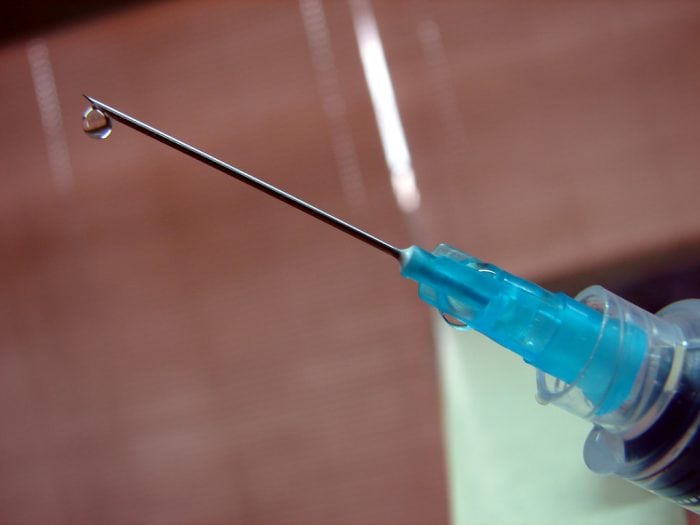
Modern general anesthesia was successfully used only one hundred and sixty years ago, but nowadays we can’t imagine surgery operations without it. From the wide variety of general inhalation anesthetics, isoflurane, sevoflurane, desflurane, halothane, and enflurane are some of the most commonly-used in medicine.
The main purpose of anesthetics is the inhibition of the central nervous system by interaction with specific receptors, which results in unconsciousness and a total loss of sensations. In particular, isoflurane, a halogenated ether, causes analgesia and myorelaxation via its action on GABA, glutamate, and glycine receptors.
The other side of that coin is a variety of side effects, which occur from the undesirable binding of the anesthetic to other molecular structures, such as other receptors, ion channels, and the cell membrane lipid bilayer, but the real precise mechanism is still unclear. Gastrointestinal tract motility may be demoted significantly after surgery operations at least in part due to anesthetic agents, but there is no in-depth explanation of the molecular mechanisms of such adverse effects. Acetylcholinesterase inhibitors, such as neostigmine, are used empirically in postoperative ileus, but their efficiency is less than optimal, while side effects are dangerously strong (recall such agents have been used as weapons in the form of nerve agents!).
In this study, we wondered whether isoflurane indeed inhibited muscarinic receptors of the GI smooth muscles as the main side effect leading to intestinal paresis, or whether other signaling links could be affected as well. In this respect, TRP channels and G-proteins that activate them downstream of muscarinic receptors were our Bogomoletz Institute of Physiology research team’s main interest in this study.
Transient receptor potential (TRP) cation channels are a superfamily of polymodal cellular sensors that are involved in various physiological processes, ranging from transduction of sensory signals, regulation of Ca2+ and Mg2+ homoeostasis, and to the Ca2+-dependent signaling processes that regulate cell growth and death, proliferation, migration, cell cycle regulation, and much more. It is noteworthy to mention that they are present in almost all mammalian cell types. They are activated by an enormous diversity of stimuli, including chemical factors such as pH and ions, physical factors such as voltage, temperature, and mechanical forces, and numerous intracellular signaling pathways.
Based on the structure of homology, mammalian TRP channels are divided into six subfamilies, and one of them — canonical TRP (TRPC) channels — have recently appeared as crucial players in the control of smooth muscle function. They are highly expressed in vascular and visceral smooth muscle cells in various organs, such as the uterus, the airways, and the gastrointestinal tract.
We thus focused on the effects of isoflurane on TRPC4 and TRPC6 channels expressed in mouse ileal myocytes, attempting to distinguish between its possible molecular targets. The literature review shows that both opioids and volatile anesthetics cause disruption of normal gastrointestinal motility, e.g. paralytic ileus usually occurs in a postoperative state as one of the gastrointestinal complications. The usefulness of the anticholinesterases in these conditions suggests that disruption of the cholinergic control of gut motility may be relevant.
In brief, the major excitatory neurotransmitter released by enteric motor neurons, acetylcholine, activates the M2 and M3 subtypes of muscarinic receptors, the main receptor subtypes present in various visceral smooth muscles. Cholinergic excitation leads to the opening of cation TRPC4 and TRPC6 channels, of which TRPC4 is the main contributor. TRPC4 activity is controlled in synergy by the M2/Gi/o and M3/Gq/PLC signaling pathways. In such a complicated system, disruption of muscarinic signaling may happen at multiple levels, from muscarinic receptors, G-proteins, and ion channels, to Ca2+ metabolism and contractile apparatus.
To shed light on the targeting points for isoflurane action within this complex system, we compared its effects on M2 and M3 muscarinic receptors activated by carbachol, and when muscarinic receptors are bypassed by the virtue of receptor-independent activation of trimeric G-proteins by GTPγS, both ways leading to the opening of TRPC4 and TRPC6 channels causing membrane depolarization and influx of calcium via L-type Ca channels as the endpoint effect.
The results of the experiments demonstrate significant inhibition of TRPC4 and TRPC6 channels by isoflurane at clinically relevant concentrations, with some remarkable differences between current responses initiated with or without muscarinic receptor involvement. The main targets of isoflurane appear to be muscarinic receptors, G proteins, or their coupling, whereas any direct muscarinic cation channel inhibition remains to be elucidated. Our results highlight the notion that volatile anesthetics inhibit intestinal smooth muscle contractions via suppression of the cation TRPC4 and TRPC6 channels. Furthermore, in future work, it would be very interesting to examine the action of other widely-used inhalation anesthetics (such as desflurane, sevoflurane, halothane, enflurane) on TPRC4 as well as other types of receptor-operated TRPC channels.
In the future, an advanced understanding of anesthetics’ side-effects will provide novel insights into how different channels are affected, as well as a better comprehension of how altered channel function influences gastrointestinal tract motility.
These findings are described in the article entitled Inhalation anaesthetic isoflurane inhibits the muscarinic cation current and carbachol-induced gastrointestinal smooth muscle contractions, recently published in the journal European Journal of Pharmacology. This work was conducted by Dariia Dryn, Mariia Melnyk, and Alexander V Zholos from the Bogomoletz Institute of Physiology of NAS of Ukraine (BIPH) and Jialie Luo and Hongzhen Hu from Washington University School of Medicine in St. Louis.









